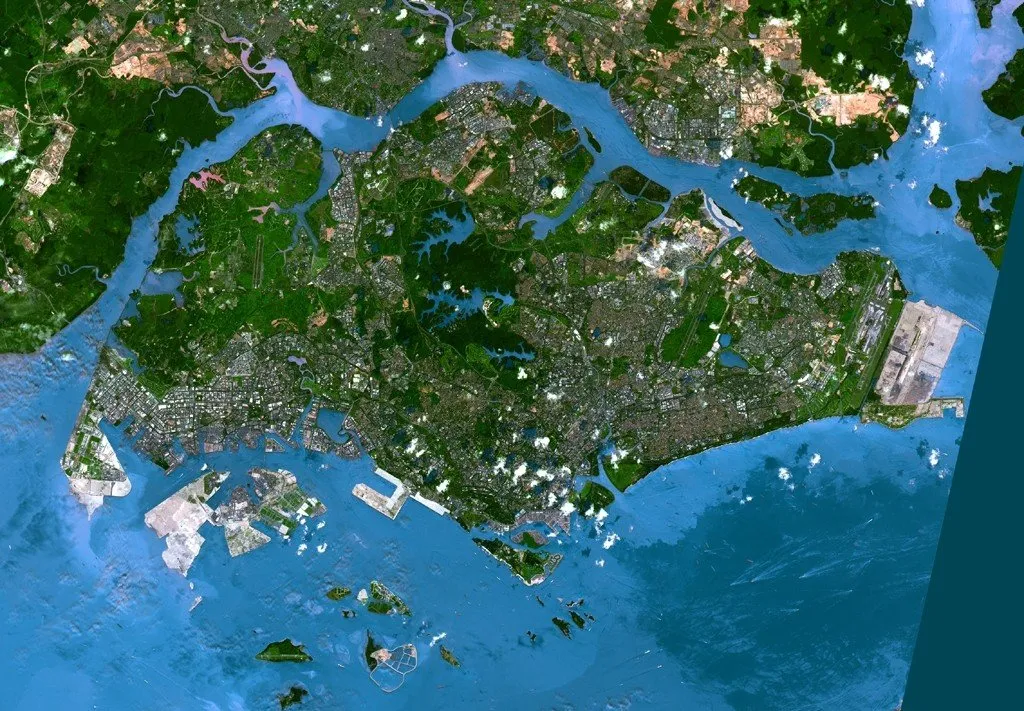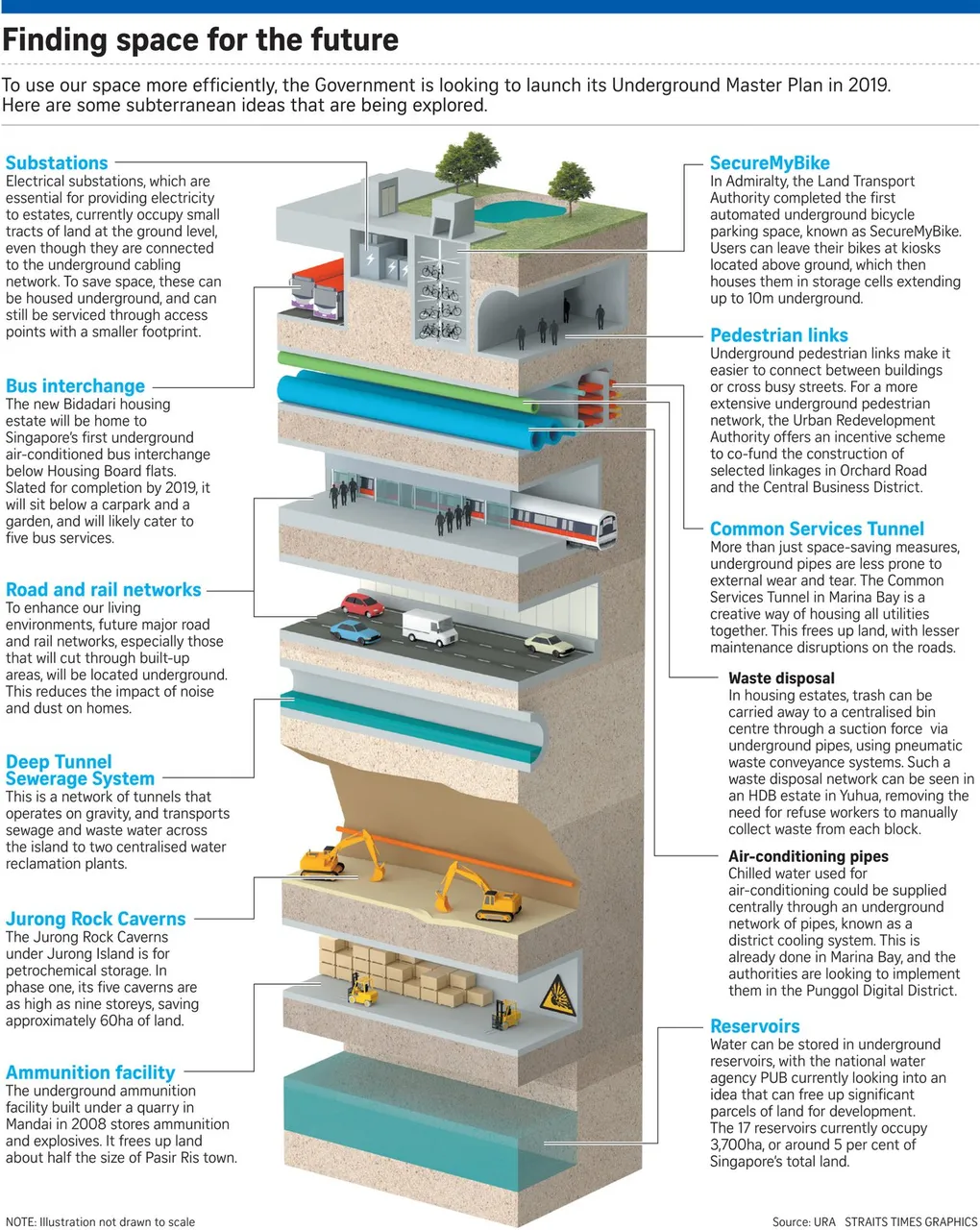
Land-scarce city-state, Singapore, is developing a master plan to develop several layers of subterranean space, since it is becoming more challenging to reclaim land from the sea. Since becoming an independent state, she has managed to increase it's land surface area by 23% through reclamation from soil and sand purchased from neighbouring countries.
Top image source.
Due largely to the following reasons, Singapore has to look beyond land reclamation to sustain a growing population that requires additional space for housing, industries, parks and tourism:
- The increasing cost of purchasing reclamation materials
- The physical constraint of expanding land area within her maritime borders
- The threat of rising sea levels from the effects of global warming
By 2019, a subterranean masterplan will be published for public scrutiny. The key elements of this plan are described in the following infographic:
The Urban Redevelopment Authority (URA) is developing 3D models of the intended underground spaces - spanning tens to hundreds of metres. In order to prepare for this plan, the government passed legislation to acquire strata of space under private land. Common public facilities like refuse collection points and power substations may be relocated underground to free up valuable surface land area. Also being considered is the storage of water in massive granite chambers in the island's core to potentially free up space currently occupied by reservoirs.
The masterplan will also enable a central database of underground facilities in the form of a 3D digital map that can be viewed by interested parties with the appropriate security clearance. The citizens are looking forward to these novel infrastructure development projects that will enhance living conditions in the Garden City, that is Singapore.
